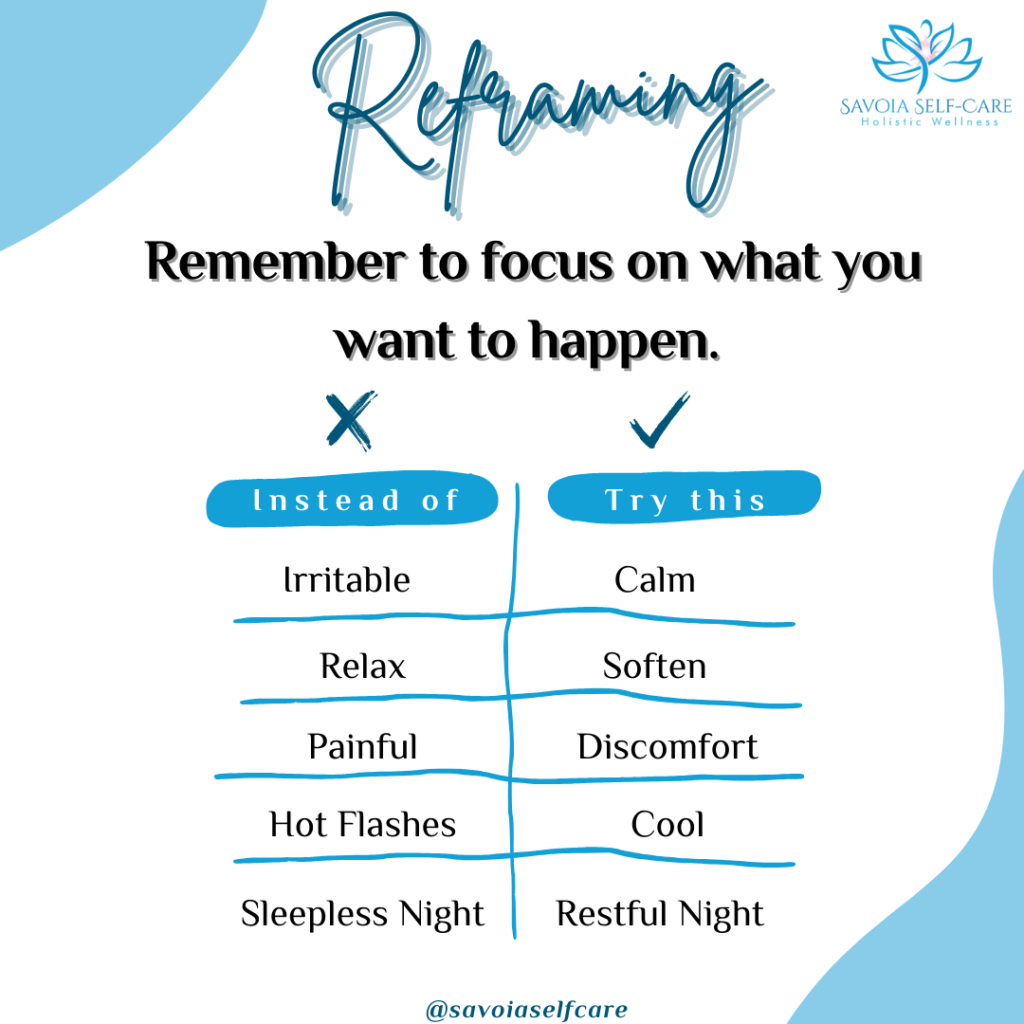How to Focus on What You Want to Happen Using NLP
Dear Self-Care Goddesses,
Let’s do an exercise.
Close one eye and put the other hand up like a little telescope round your other eye so that you are only looking through a tiny part. Now look at the area around you. If you take your hand away. The room is still there. But you only saw a tiny part of that room. That’s what our brains are doing every moment. Our brains are taking in only our own tiny little perspective. In any situation that becomes our reality.
What is NLP – Neuro Linguistic Programming?
Fiona Campbell, is a highly respected experienced international licensed NLP trainer and professional growth and executive coach. According to her, NLP is the methodology of how we create behavior. In my podcast conversation she explains that all behavior is a structure. This structure can be replicated, modelled or changed. It means that we are in control of our life. Fiona says that we are creating our own perspective of any situation, depending on where we put our focus & depending on what we decide to filter and what information we delete, distort or generalize.
In NLP we recognize that our thoughts create our results and behavior. But what most people don’t know is that we can take control of our thoughts. When we take control of our thoughts, we can change our perspective in any situation. NLP has lots of uses and amazing applications for communication, influencing, persuasion and accelerated learning.
NLP Therapists work with what they hear from you. These are the thoughts that you are paying attention to at a point of time. They observe body language, narratives, body posture and voice tone.
NLP is meeting people where they are and changing one small step at a time. Even 1{1e16acf445973e61fdbd53de1c132af7e84fd195cf15d57956db2b0426c8fa60} change every day is good because by the end of the year, it’ll be 365{1e16acf445973e61fdbd53de1c132af7e84fd195cf15d57956db2b0426c8fa60}. It is also about the education, practice and application. When NLP is ingrained and part of your way of thinking and living right you can get authentic transformational results.

Your ‘Self-Talk’ Matters – A lot
In our podcast conversation Fiona recommends the best basic NLP tip which is self-talk. She explains that we are running a soundtrack all the time in our head, our self-talk is that soundtrack. We are constantly saying things and having discussions and arguments going on within ourselves at the subconscious level. Once we become conscious of our self-talk that is the key to starting to take control. If you believe that something is going to be difficult, painful or a struggle. You’re absolutely right. If you tell yourself, I can’t do something, you’re right. However, when you tell yourself, you can do something, your body creates a whole new set of chemicals. The important thing is to start to notice some of these thoughts and internal dialogues.
Try this exercise to be aware of your self-talk:
- Set your phone timer for 10 minutes, get a piece of pen and paper and write everything you hear in your head.
- It could be random things like, “I don’t know what I’m supposed to be doing here”. “What am I doing?” “I did this” and “I did that”.
- Don’t take the pen off the paper. Keep writing, you may go through 5-10 sheets of A4, just keep writing.
- Then look back and notice how the brain is running very often this unfocused rubbish or garbage.
- Once you’re aware of that, the next thing is to STOP it and focus on practicing positive self-talk.
Focus on what you want to happen, not what you don’t want to happen. When we practice positive self-talk, we’re not necessarily talking about why “I’m fabulous”. “I’m great”. “I’m fantastic”. Because sometimes we don’t feel that way. Positive self-talk is seeing what you want to happen, not what you don’t want to happen.
NLP Techniques
- Auditory Technique:
Your brain is compelled to respond to anything you tell it. Just say ‘stop’ out loud and strong with conviction. In a split second, your brain will actually stop the talk. Then you’ve got to tell yourself what you want to happen, not what you don’t want to happen. Tell your brain:
Stop – Focus.
Stop – Breathe.
Stop – Easy.
For example, instead of telling your brain, “I’m going to be really nervous about this”, you start to tell it “I am prepared for this”. Be confident when you say this. The brain cannot process negatives. Consider this interesting analogy – Imagine sitting in front of the laptop and typing on the keyboard. ‘I don’t want this sentence to appear on the screen’. That is exactly what happens with our brain.
2. Kinesthetics or Touch Technique
- Take the tip of your tongue and press it against the back of your front teeth gently.
- Close your mouth. Notice what’s happened to your self-talk. It stops.
By stopping the tongue from moving, we can also stop the self-talk. Sleep is a huge component of holistic health. If you are unable to sleep, Fiona recommends this tip. Gently press the tip of the tongue behind the front teeth and breathe. Tell yourself, “Sleep, Sleep, Sleep” in a calm and gentle tone. This way take yourself to an almost sleepy state. Use a gentle voice with yourself and believe that it can be this easy to fall asleep!
NLP and Perimenopause
Fiona shares her own experience with perimenopause. When she was going through menopause, it was never spoken about and women went through this transition in silence. Fiona calls this a very “nutty time”. She had very bad menstrual problems and was bleeding heavily for 20 days a month. She was prescribed morphine-based medication, underwent lot of tests and doctors recommended a hysterectomy. Fiona being trained in hypnotherapy, used the hypnosis pain control techniques on herself. She started to do a hypnotic technique that was like a natural way of working with pain. She was practicing going into that relaxed state to keep the pain under control and in two months she resolved this problem using self-hypnosis. She was able to bring the bleeding down from 20 days to 5-7 days. Self-hypnosis and talking to yourself and body, asking the body to get back naturally into balance mainly by bringing relaxation to the mind and body. She is convinced that breathing techniques are very effective relaxation strategies. If you breathe deeply from your belly, you start to stabilize your body’s autonomic system.
According to Fiona, during perimenopause women are dealing with all sorts of things, including changes in the body. Women going through perimenopause may feel like they are slipping away from their youthful ways. It coincides with aches and pains and women start to notice that a lot of the things they did automatically and easily, aren’t quite as automatic and easy anymore. And there’s a strong sense that all is finished. Physiologically the youthful energy can drop during perimenopause and menopause. That is why it’s critical to start preparing for these changes so to avoid the nasty symptoms.
Educate yourself about the transition that’s happening and educate your brain to understand how to manage this change. Yes, there may be discomfort. You may experience a senior moment in perimenopause like brain fog. Accept and know how to overcome it.
I love how Fiona advices us to STOP using the word ‘pain’, because the word itself is associated with that sensation of pain in your body. She emphasizes to swap it for ‘discomfort’. This technique is called reframing.
Reframing is a very important NLP linguistic & mindset tool which we can use to quickly and effectively change the meaning of things. According to the Harvard Business Review “How you frame your problem will influence how you solve it.” It is important to recognize that the words we choose have a tremendous impact on the trajectory of problem-solving efforts and the countermeasures. The purpose of reframing is to help experience actions, beliefs and feelings from a different perspective and have more choice in the way we react and feel. Instead of saying painful, you use the word discomfort. Instead of saying relax, you can say soften. Get back to what you want to happen. Not what you don’t want to happen. Remember to be patient with yourself. Everything will pass in a moment. Be kind to yourself. Slowly and deeply breathe and tell yourself this is a natural normal thing happening to my body. Give and receive all the empathy you can. Rather than focusing on your hot flashes or focusing on discomfort or pain, focus on what you want to be and how you want to feel? And the brain will respond accordingly. Create that reality. You will attract that reality in your sphere through the energy that you are giving off.

Self-Care Actions for Good Health & Wellness
Self-awareness is extremely important in your healing and wellness journey. Look at yourself in the mirror. If you don’t like yourself, at least look at yourself and say “I accept myself”. When you accept yourself the process of change starts to happen from that moment of acceptance. Fiona, shares 3 self-care actions for good health and wellness:
- Exercise. Develop a routine. Get yourself into the habit of doing something that stretches & moves your body. Get up and walk at least two or three times a day for 5-10 minutes.
- Be kind to yourself and value yourself enough to make spend time with yourself.
- Right Self-talk. Like yourself for who you are – your own fabulous, wonderful, unique human being. Know that there is nobody as special as you. The worst thing you can do is compare yourself to other people. No one has got the perfect life.
Let us all celebrate life and applause each other for the wonderful work we are doing. Together we can and we will make a difference.
If you’re a midlife woman struggling with weight gain? insomnia? mood swings? Get off the hormonal roller coaster ride and download your FREE Perimenopause Rescue Guide here.

